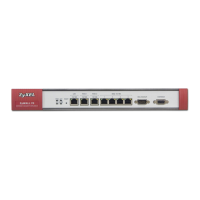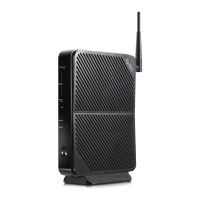Chapter 22 Network Address Translation (NAT)
ZyWALL 5/35/70 Series User’s Guide
443
22.4.5 Port Translation
The ZyWALL can translate the destination port number or a range of port numbers of packets
coming from the WAN to another destination port number or range of port numbers on the
local network. When you use port forwarding without port translation, a single server on the
local network can use a specific port number and be accessible to the outside world through a
single WAN IP address. When you use port translation with port forwarding, multiple servers
on the local network can use the same port number and still be accessible to the outside world
through a single WAN IP address.
The following example has two web servers on a LAN. Server A uses IP address 192.168.1.33
and server B uses 192.168.1.34. Both servers use port 80. The letters a.b.c.d represent the
WAN port’s IP address. The ZyWALL translates port 8080 of traffic received on the WAN
port (IP address a.b.c.d) to port 80 and sends it to server A (IP address 192.168.1.33). The
ZyWALL also translates port 8100 of traffic received on the WAN port (also IP address
a.b.c.d) to port 80, but sends it to server B (IP address 192.168.1.34).
" In this example, anyone wanting to access server A from the Internet must use
port 8080. Anyone wanting to access server B from the Internet must use port
8100.
Figure 255 Port Translation Example
See also Port Restricted Cone NAT on page 449.
22.4.6 Configuring The Port Forwarding Screen
Click ADVANCED > NAT > Port Forwarding to open the Port Forwarding screen.
" If you do not assign a Default Server IP address, the ZyWALL discards all
packets received for ports that are not specified here or in the remote
management setup.
Refer to Appendix B on page 783 for port numbers commonly used for particular services.

